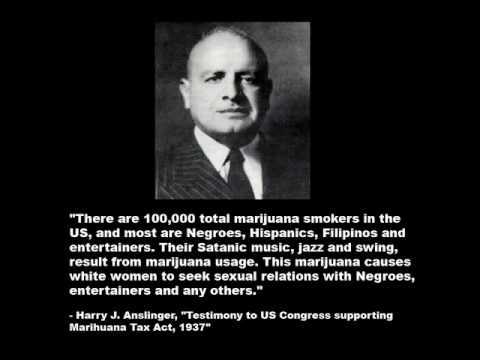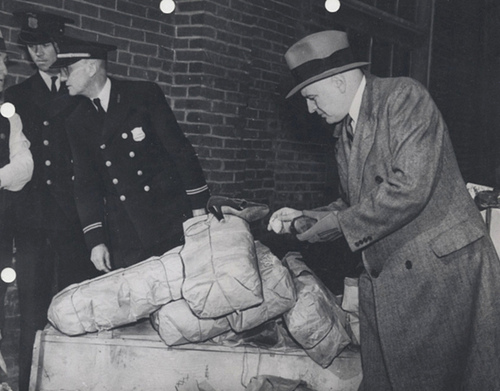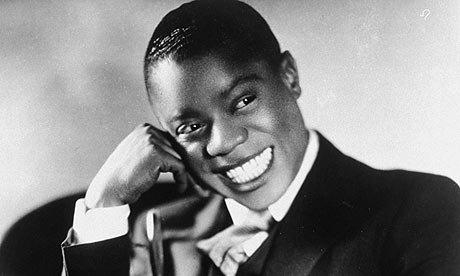I’m not favorable toward legalizing marijuana, but I promised you to write a post about the history of marijuana to emphasize its place and its role as an important part of Jazz History.
Indeed, I know the damages it can create on a desperate society, such as every drugs. It destroys families and youngster’s beliefs. They lost their dreams and let the drug eat them until they reach the no-return point. Progressively, they lose their ability to concentrate and imagine. They become anxious, depressed and unpredictable. Nothing can give them their soul back. The coming-off is a living hell as well. They have nightmares, cold sweat, nausea, high irritability and so forth.
Even in Mexico, the population was worried about the impact of the drug on the society. Nowadays I think it is not achievable. In the consumption society, people get too easily addicted in order to compensate their loneliness or their material lacks.
However, the prohibition was made on the base of racism and licentious decisions.
“Sailors and West Indian immigrants brought the practice of smoking marijuana to port cities along the Gulf of Mexico. In New Orleans newspaper articles associated the drug with African-Americans, jazz musicians, prostitutes, and underworld whites. “The Marijuana Menace,” as sketched by anti-drug campaigners, was personified by inferior races and social deviants.”
Mexicanos, Hindoos ( In India marijuana was a “Sacred Grass” for the Hindus. From 1200 – 800 BCE, it was used as a medication and an offering to Shiva.), Afro-american and the ones that newspaper called the “underworld whites” became the center of a conspiracy and unfairly the scapegoats of the war against marijuana. Their motives were not about the health of these people but more about WASP safety.

Here, I offer some quotations to illustrate the atmosphere of the period and how the racial hatred was prevailing on morality.
“I wish I could show you what a small marihuana cigaret can do to one of our degenerate Spanish-speaking residents. That’s why our problem is so great; the greatest percentage of our population is composed of Spanish-speaking persons, most of who are low mentally, because of social and racial conditions.”
The government had a very low idea about the real risks associated with the consumption of marihuana. All their accusations were basically based on myths.
“People who smoke marihuana finally lose their mind and never recover it, but their brains dry up and they die, most of times suddenly.”
The perfect counter example is Louis Armstrong who died from a heart attack at the age 72 and he was of sound mind.
“Driven mad by marihuana” and attacking his fellow soldiers (El Monitor Republicano, 1878), a pot-crazed soldier murdering two colleagues and injuring two others (La Voz de México, 1888), a prisoner stabbing two fellow inmates to death after smoking up (El Pais, 1899).”
[…].”Assassin” has two explanations, but either demonstrates the menace of Indian hemp. According to one version, members of a band of Persian terrorists committed their worst atrocities while under the influence of hashish. In the other version, Saracens who opposed the Crusaders were said to employ the services of hashish addicts to secure secret murders of the leaders of the Crusades. In both versions, the murderers were known as “haschischin”.
Extract from the book of Hammer-Pugstall’s : The History of the assassins (1835)
Ansligner used to rely on this explanations to convince the Congress and deliberately stopped the liberal scientific studies on the drug. (He has is own scientific, his friend James Munch). He used to create new reasons to forbid and reinforce his argumentation against the drug. In the early 1950’s, he declared without quoting his sources that marijuana was a step to heroin addiction. He also states that the Communist were actively distributed cannabis in the U.S to weaken the American and make them easy to conquer. The fever of the Cold War accelerated the decisions about the prohibition of the consumption and the possession of marijuana in United States. He convinced President Truman to sign the Briggs Act which required a minimum twenty years in jail for marijuana possession when a murderer gets minimum fifteen years and ten years minimum for a rape.
In 1961, Anslinger conquers the world with his nonsensical arguments. He addressed the United Nations and convinced one hundred countries to sign an international agreement against marijuana. By 1963, added to the previous 270 million, this war against the drug had cost an additional $1.5 billion.
Still, Anslinger wrote a book entitled The Protectors in 1964 and he dedicated a chapter to the Jazz community: “Jazz and Junk Don’t Mix”. According to him Charlie Parker and Billie Holiday died after years of heroin and drugs abuse. He wrote :
- “Jazz entertainers are neither fish nor fowl. They do not get the million-dollar protection Hollywood and Broadway can afford for their stars who have become addicted – and there are many more than will ever be revealed. Perhaps this is because jazz, once considered a decadent kind of music, has only token respectability. Jazz grew up next door to crime, so to speak. Clubs of dubious reputation were, for a long time, the only places where it could be heard. But the times bring changes, and as Billy Holiday was a victim of time and change, so too was Charlie Parker, a man whose music, like Billie’s, is still widely imitated. Most musicians credit Parker among others as spearheading what is called modern jazz.”
- The Protectors by Harry J.Anslinger, p. 157 (1964)
- References:
http://www.britannica.com/blogs/2010/10/reefer-madness-and-the-prohibition-of-marijuana-in-the-united-states/
http://www.npr.org/blogs/codeswitch/2013/07/14/201981025/the-mysterious-history-of-marijuana



